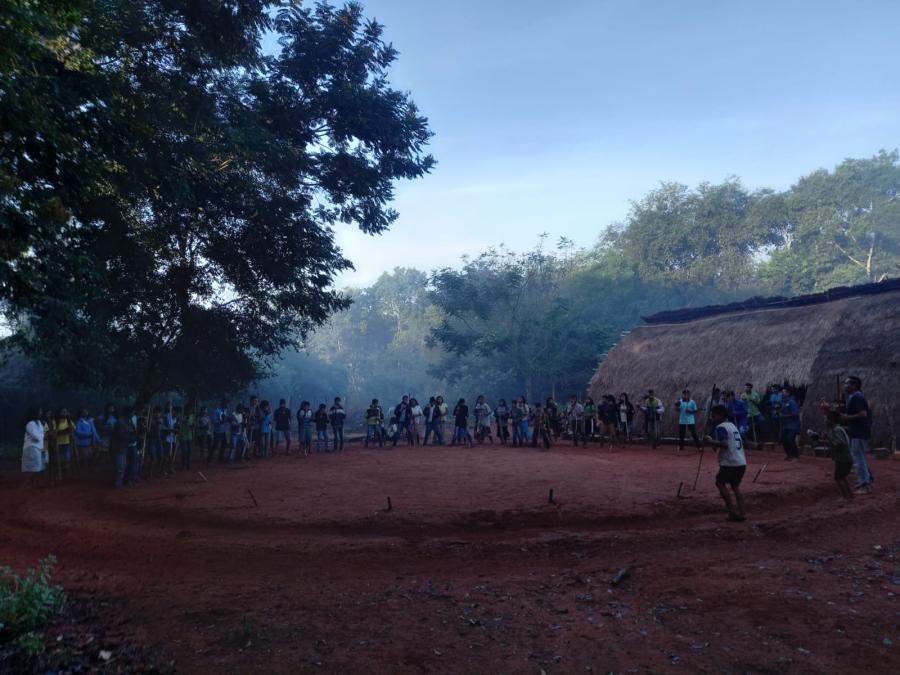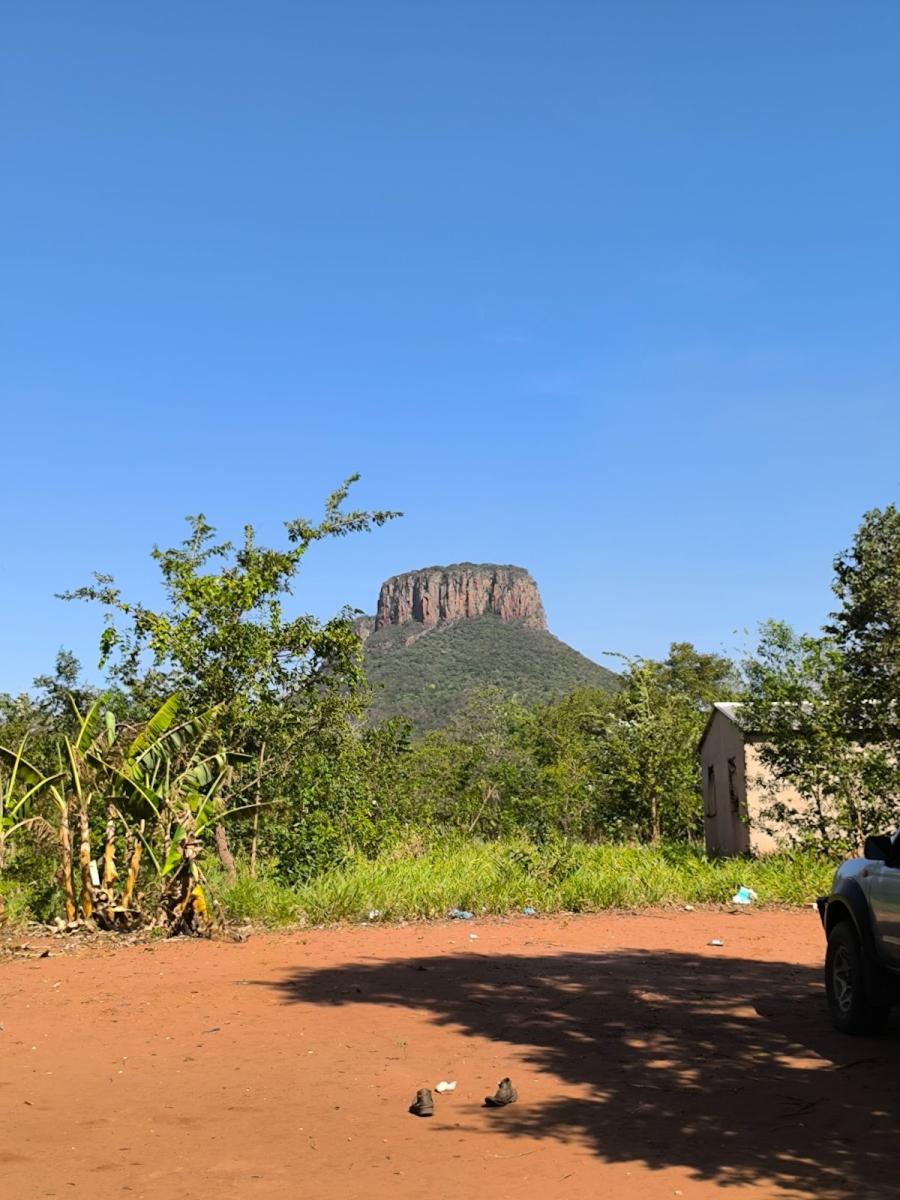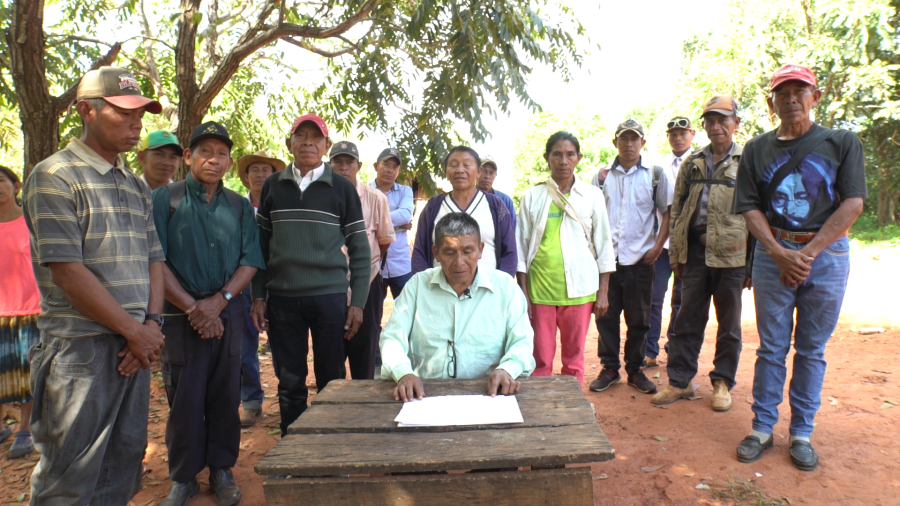Deep within the heart of South America lies the Paraguayan Chaco, a desolate, semi-arid region - similar topographically and climatically to the Australian Outback - that is home to nine different indigenous peoples with a total population of approximately 40,000. These groups include the Ayoreo, Chamacoco, Enxet, Nivakle, Manjuy, Maka'a, Toba Qom, Nandeva, and the Guarayo. These groups, in particular the Enxet, are currently engaged in a protracted struggle with the Paraguayan government to obtain title to their ancestral lands - lands to which they are, according to the Paraguayan constitution, legally entitled. What follows is an analysis of the current status of this effort, based on information gathered by Tierra Viva, the leading Paraguayan indigenous rights NGO, and on interviews conducted by the author with members of this group and with Paraguayan indigenous leaders. History
The current land disputes involving the indigenous populations of the Chaco date to the early part of the nineteenth century. In 1825 the Paraguayan government issued a decree in which it demanded that all Paraguayan citizens present titles to the lands which they occupied. Lands without proper titles, i.e., those belonging to indigenous group, were declared property of the state. The Paraguayan government used this decree to take "legal" possession of the Chaco, which at that time was almost exclusively populated by indigenous groups. The government would later sell large portions of the Chaco to European landowners.
The expropriation of the region by the Paraguayan government did not, however, represent an immediate change in the land situation of the Chaco, as most of the territory remained under indigenous control. Indeed, unlike many other areas of the Americas where indigenous groups were driven off their lands and/or exterminated soon after the arrival of the Europeans, the Paraguayan Chaco remained largely under indigenous control until well into this century. This was primarily due to the fact that the Chaco lacked resources which would have attracted European immigration. However, after 1932 and the War of the Cha between Paraguay and Bolivia, the Paraguayan government began to put more emphasis on colonization as a security measure. In the years following the war the majority of the indigenous population of the Chaco was displaced from their territory, which was turned over to European latifundistas, who today continue to control most of the land in the region. It is against these large-scale landowners (and their advocates within the Paraguayan government) that the indigenous populations of the Chaco currently find themselves pitted in their efforts to reclaim their lands. Paraguayan Law
The indigenous group of the Chaco base their land claims on provisions found within Paraguayan law, which offers a relatively strong basis from which to make such claims. The Paraguayan constitution (adopted in 1992 after the fall of dictator Alfredo Stroessner), for example, contains the following provisions: Article 63: The indigenous peoples of the Paraguay are guaranteed the right to preserve and develop their ethnic identity in their own habitat. Article 64: The indigenous peoples of Paraguay have the right to ownership of land in quantity and quality sufficient for the conservation and development of their particular ways of life. The State will provide to them these lands free of cost...Transference of ownership of these lands is forbidden without the expressed consent of the indigenous populations. .TX.-Additionally, in 1993 Paraguay ratified the International Labor Organization's Convention 169 - considered one of the strongest international protections for indigenous rights. Article 14 of this convention recognizes the right of indigenous groups to the land they "traditionally occupy." Thus, in ratifying the convention and explicitly recognizing the right of Paraguayan indigenous groups to their traditional lands, the Paraguayan government effectively delegitimized its own "right" to indigenous land established by the Decree of 1825.
Another source of protection for indigenous land rights found within Paraguayan law is the "Statute of Indigenous Communities." Article 1 of this law guarantees land to indigenous communities and Article 20 holds that this land will be granted in quantities of "not less than 100 hectares per family." This figure of 100 hectares, however, is currently considered by indigenous groups to be highly inadequate, particularly within the context of the new constitution which guarantees indigenous groups the right to maintain their "cultural identity and particular way of life." Moreover, indigenous rights advocates point out that this figure is intended to be interpreted as a minimum, and not, as the Paraguayan government currently sees it, as the maximum amount allowable under law.
Finally, law 43/89 of the Paraguayan Panel Code allows indigenous groups to obtain court orders preventing encroachment upon lands which they claim. Clearing or farming of land claimed by indigenous groups, for example, is barred without their consent.
Given these strong and unambiguous protections for indigenous land rights under Paraguayan law, the resolution of land claims should be a relatively simple, straight-forward matter. The opposite has been the case, however, as the Paraguayan government has in fact done very little to resolve these claims. Further, the reclamation process is slanted decidedly to the disadvantage of the indigenous groups, for reasons that will be discussed below, with the result that relatively few land claims have actually been filed.
Currently, indigenous communities in the Chaco hold title to only 500,463 hectares of land, even though the indigenous comprise the majority of the Chaco's population. Almost all of this land has been obtained through funds provided by foreign groups working on behalf of the indigenous populations. Only 60,000 hectares have been provided directly through funds granted by the Paraguayan government. Moreover, the land that has been granted to indigenous groups is far less than what they have claimed as their proper territory. The Enxet, for example, are the group that has been given the most land, but the land granted constitutes only 20% of what they claim as their true territory. The amount of land granted by the Paraguayan government has been less even than the 100 acres per family to which the indigenous are supposedly legally entitled. In the entire Chaco the quantity of land provided thus far amounts to only 46 hectares per family. In the Colonies
Most of the indigenous peoples in the Chaco have settled in colonies. Indigenous rights advocates are particularly concerned about the land situation in these colonies, few of which possess the minimum 100 hectares per family provided by law. Some examples include the central Chaco Enxet colony of Ylave Sanga where 1,389 Enxet live on 5,965 hectares, which translates to 15 hectares available per family. Another Enxet colony, La Esperanza, has 13 hectares per family and another, Nueva Promesa, has a relative abundance with 74 hectares per family. Of a total of 52 indigenous colonies in the Chaco only 12 (with a total population of 2,800) have 100 or more hectares per family. Thus only 7% of the indigenous population of the Chaco have the amount of land to which they are legally entitled by law.
The fact that the indigenous population are concentrated on such a small amount of land has meant that they have been unable to support themselves through their traditional methods, such as hunting, gathering, and fishing. This situation is in direct violation of the Paraguayan constitution which stipulates, as noted above, that the indigenous groups have a right to "preserve and develop their ethnic identity." The indigenous have in many cases found it impossible to switch to agriculture as a form of subsistence due to the variability of the Chaco's rainfall and the poor quality of its soil. Thus, many indigenous are forced to leave their colonies in search of work, often to one of the large cattle ranches found in the Chaco. At these ranches the indigenous become, in many instances, virtual indentured servants, working long hours for very little pay. In some case they receive to cash payment at all, but are instead paid in food and a promise to be paid cash at a later date. Problems with Filing Land Claims
The total number of land claims filed by the indigenous groups of the Chaco is relatively small, given the degree to which they lack sufficient land. This situation, argue indigenous rights advocates, is due, in part, to the fact that many indigenous are simply unaware of the rights that they have within Paraguayan law to make such claims. In addition, the Paraguayan government has done nothing to educate them as to these rights. Moreover, those indigenous communities who are aware of their rights and are interested in making land claims are often unfamiliar with the legal procedures for making such claims. They also lack access to qualified lawyers familiar with the labyrinthian Paraguayan bureaucracy who could process these claims on their behalf. The Chaco indigenous groups frequently lack the resources to make the trek to Asuncion to present their claims. Many indigenous communities speak only their tribal language, which further limits their access to the Spanish - or Guarani-speaking bureaucracy in Asuncion. Thus, unless their cause is taken up by an NGO with the resources and skills to overcome these obstacles, the indigenous groups of the Chaco have realistically very little change of successful resolution of their claims. The result of this situation is a low number of filed claims, which allows the Paraguayan government to argue that the land needs of the indigenous groups in question are not great, thus, justifying further inaction on its part. Other Players
One of the most powerful interests aligned against the case of indigenous rights in Paraguay is the Assocacion Rural del Paraguay (ARP), which represents the country's ranchers and large landowners. This organization is currently carrying out a vigorous campaign against the granting of land titles to indigenous groups, particularly in the Chaco. It has attempted to change law 43/81 as it believes the law is "overly favorable" to the interests of indigenous communities.
The ARP has formed alliances with various other groups not favorably disposed to the indigenous cause, including conservative members of the Paraguayan parliament, certain sectors of the Catholic church, and groups representing the Mennonite communities of the Chaco. Despite its decidedly anti-indigenous orientation, the ARP in January of 1995 signed a cooperative agreement with the Association de Parcialidades Indigenas (API), the only organization that has attempted to act on behalf (ostensibly) of all Paraguayan indigenous groups at a national level. Currently, due to corruption within API's leadership, several of API's projects are being financed by the ARP. As a consequence, the vast majority of Paraguayan indigenous groups have now rejected the API's representation and are essentially left to fend for themselves, along or with the help of an NGO.
The efforts of the ARP to block the granting of indigenous land claims have had considerable success. In recent years the Paraguayan government has granted no new land titles to indigenous groups of the Chaco and has not protected the lands currently claimed by these groups as it is required by law to do. As mentioned above, according to law 43/89 the indigenous communities have the right to ask for court orders preventing encroachments upon lands which they claim. In numerous cases, however, encroachments have occurred and the Paraguayan government has done nothing to remedy the situation. The worst such case began in 1991 in Quebrachales Puerto Colon where the Enxet claimed 60,000 hectares. In only three years all of this land was broken up into lots and sold to latifundistas with no preventative action taken by the government. Hope After Stroessner
With the overthrow of Stroessner in 1989, there was hope that the land situation for the indigenous of Paraguay would change. In the first annual budget of the post-Stroessner government the funding given to INDI (a bloated and bureaucratic institution that is theoretically the government body charged with looking after the interests of the Paraguayan indigenous population - including the purchase of land for indigenous groups) for land purchases was raised 160%. The majority of this money, however, was used only in one region, Caazapa, as a condition for a controversial World Bank project. The result was that the amount of land that could be obtained with the funds allocated to INDI for 1990 was less, in fact, than what could have been obtained with the funds allocated by the Stroessner government seven years earlier. In the ensuing three years the money allocated to INDI for the purchase of lands was either not granted at all or was sharply reduced, due to the government's unwillingness to confront the issue. In 1994 INDI found itself completely without funds for the purchase of land to be granted to indigenous communities. Nevertheless, in 1995 the Enxet began a campaign to raise the total amount of money allocated to INDI for land purchases. The result has been that the allocation for 1995 was raised considerably to approximately $4,800,000. This amount, however, is still not sufficient for INDI to fulfill the land claims held over from preceding years. Conclusions
The indigenous of the Paraguayan Chaco face a multitude of obstacles in trying to reclaim their lands, including a lack of knowledge of their rights and the fact that in order to process their claims they must confront the dauntingly bureaucratic Paraguayan legal system. In addition to these problems of process, the indigenous communities of the Chaco find themselves challenged in their efforts by their own social organization. Many of these groups, such as the Enxet, have within their communities a low level of social organization; their groups tend to be socially "atomized" and place strong emphasis on personal autonomy. They have never organized themselves on a level beyond that of the community, except during times of war. Thus, a united action, drawing together numerous communities and uniting under on leadership, as many indigenous rights advocates argue these groups must do, would constitute a major cultural change.
These advocates argue, however, that it is precisely this kind of unity, combined with greater access to the Paraguayan legal system and, importantly, pressure from the international community (to which the Paraguayan government has proven sensitive in the past) that is essential if the indigenous groups of the Chaco hope to see an improvement in their land situation. In the absence of these factors, and in the face of further hostility (or at best indifference) on the part of the Paraguayan government, the indigenous communities of the Paraguayan Chaco can expect continued difficulties in their efforts to take back their land. Article copyright Cultural Survival, Inc.



